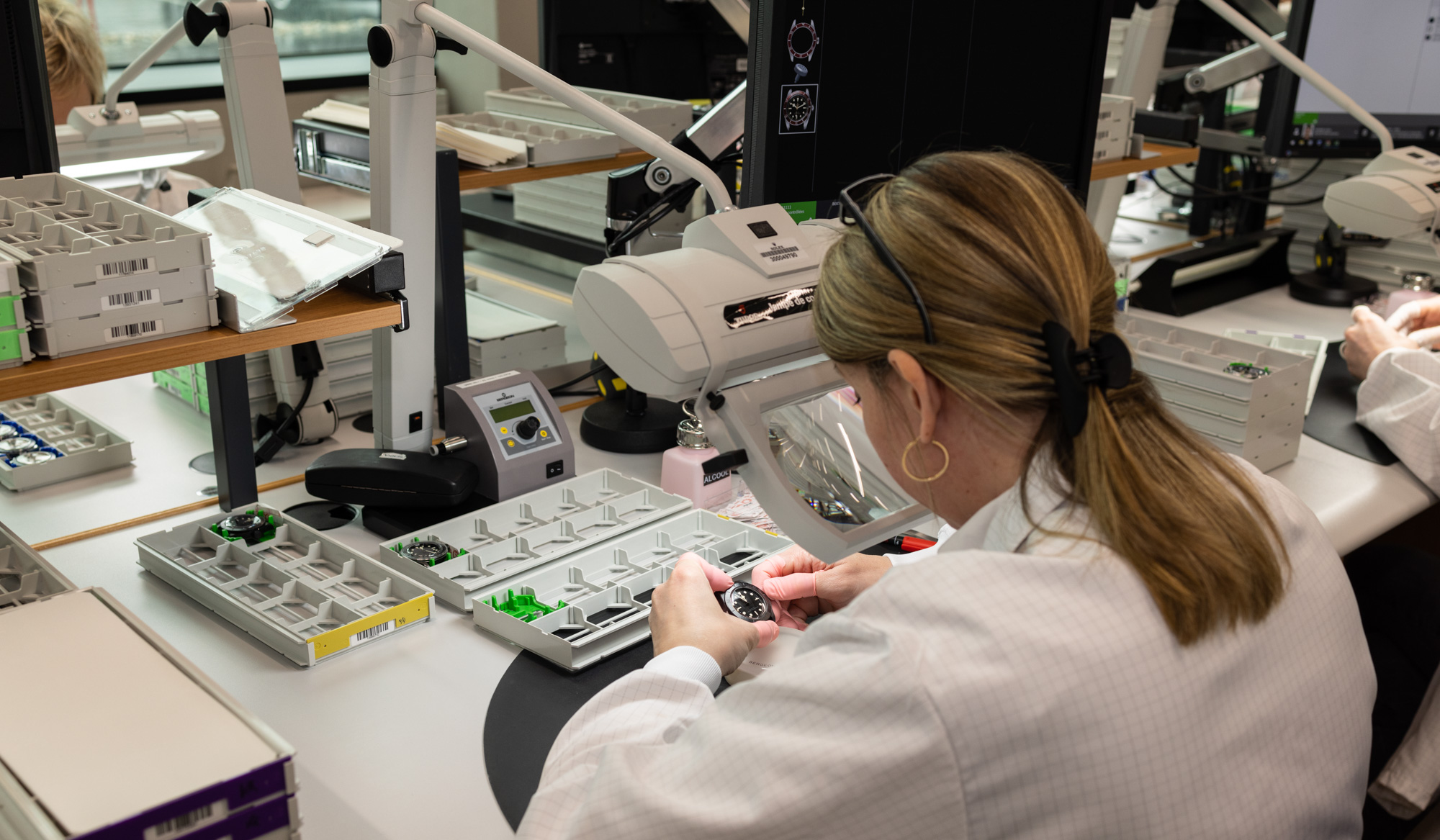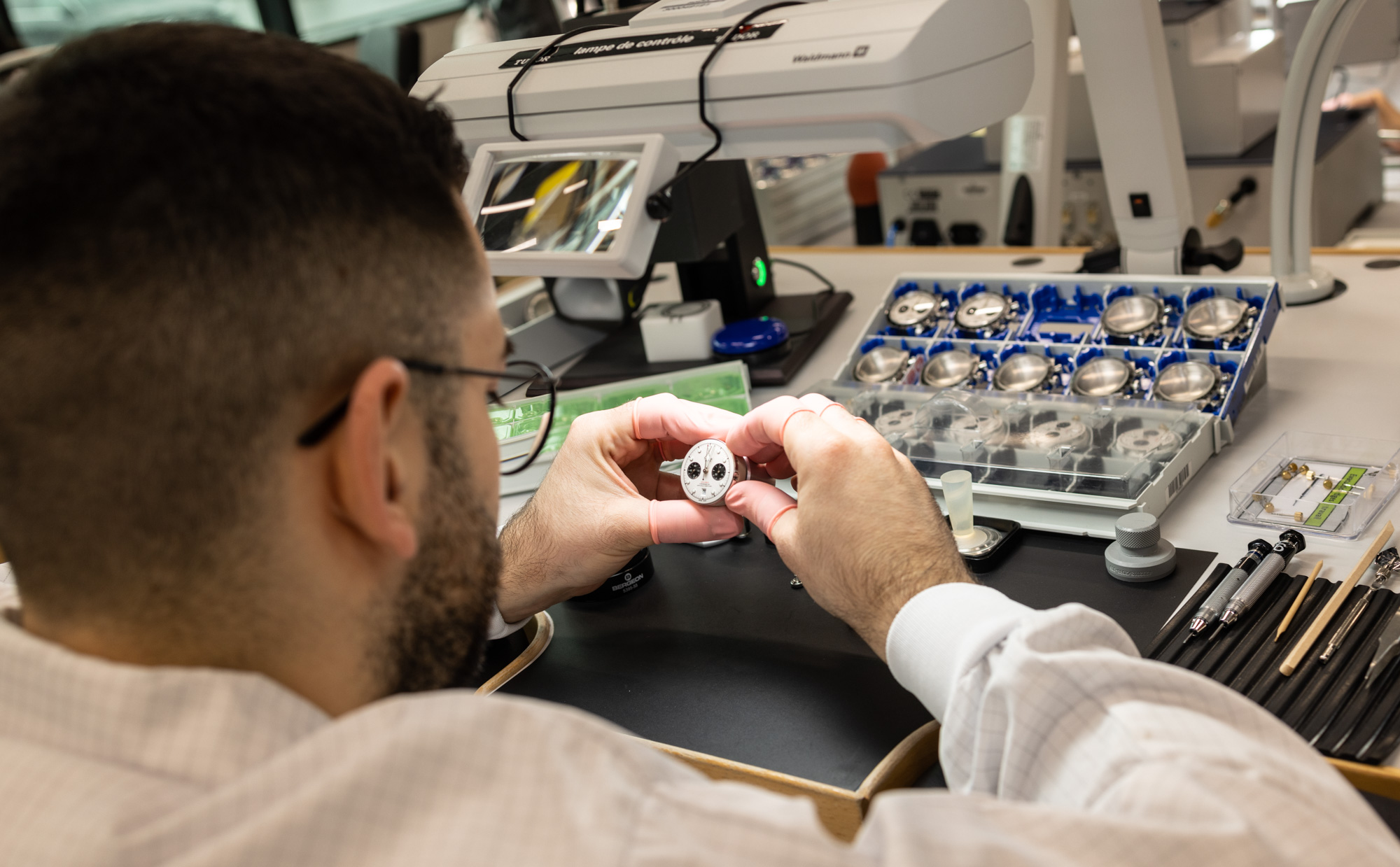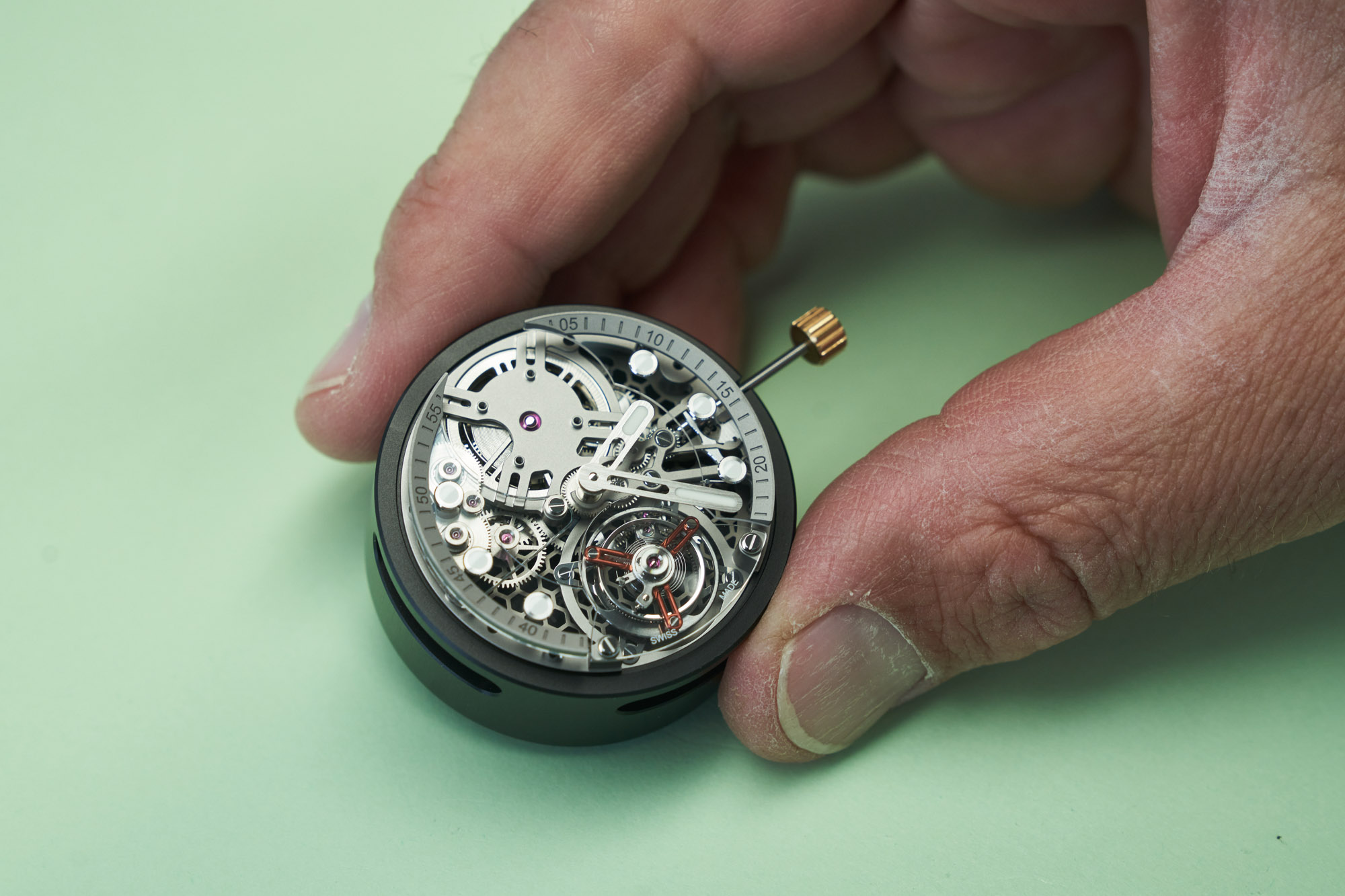
I recently wrote an article about the silent war between watch brands and retailers that (in my opinion) is holding back growth in the luxury timepiece market. The gist of the essay was that, in an attempt to maximize profit from the sale of watches happening around the world, watch brands deprived local retailers of sharing enough profits and thereby hindered expanding markets because local interests had little reason to invest. The feedback from that article was profound. It also reminded me that before watch brands fought local retailers, these brands started a fight with local watchmakers. Now, a number of years after many (but certainly not all) companies attempted to make watch repair a profit driver, is it time for them to let go and return much of the business to third-party independent watchmakers?
When I first started writing about watches in 2007, I’d see the occasional article or forum post about the terrible things (according to the writers of said posts) that were happening to independent watchmakers in all parts of the world. The story each time was relatively similar: An otherwise competent and respected watchmaker had its “parts account pulled” from a major watch company. That meant they were no longer able to purchase official timepiece parts and components from companies like Rolex or Omega, effectively depriving them of being able to service watches from those brands in a way that would preserve the warranty by using original equipment manufacturing (OEM) factory parts. In many instances, this deprivation of parts entirely ruined an independent watchmaker’s ability to make a living. Many of them left the industry or slowly wound down their businesses and advised their children against going into the same profession.
In the early 2000s, the watch industry was already suffering from a lack of qualified watchmakers. Forcing existing watchmakers to cede even the small businesses they had further discouraged new people from studying to become watchmakers. There was persistent talk of a looming crisis. Specifically, a crisis could occur a few years after a brand originally made watches and people would need to get them serviced, and there were not enough people to do so. Often, such decisions were made by brand managers who knew they would no longer be in the role when the crisis would become apparent. With this in mind, they made decisions that made them look good in the short term, only to create long-term problems they didn’t care too much about. Independent watchmakers tried every argument possible to get major watch brands to change course but to little avail. What were the watch brands thinking, exactly?

There are two layers of why certain large watchmaking companies decide to restrict consumers from getting watches serviced exclusively through them. Legally speaking, companies can’t absolutely forbid a customer from trying to fix their watch however that customer likes, but practically speaking brands have tools available to them that prevent consumers from taking repairs into their own hands. Simply not selling the right parts to independent watchmakers is one of those highly effective tools. Mind you, this is a lesson the luxury watch industry learned mainly from the luxury automotive industry (an industry watch brand managers typically idolize).
The first layer is the moral justification for taking watchmaking in-house. The most effective argument is that some independent watchmakers do a poor job, and thus trusting them with high-end watch repair is a liability. The claim is that brands are often called upon to redo botched work and that, at times, customers even blame the brands for it. A number of major luxury names have effectively argued that only they can maintain strict quality control standards and that there is too much liability for both brands and consumers to routinely trust potentially untrained independent watchmakers with their products. They further argue that botched watch repairs reflect poorly on the brand versus the service provider and that the lifeblood of most luxury firms is the value of their reputation. Thus, over the last 20 or 30 years, watch brands have been able to assert almost total control over how and where their watches are repaired.
What about the practical justification for brands wanting to take watch repair and service in-house? Are they simply motivated by maintaining a good customer experience, and attempting to clean up a dangerous market filled with unscrupulous watchmakers who are happy to take on a job they are not equipped to perform? Probably not. The impetus for many watch brands wanting to perform all the watch repair work themselves was to make more money. The idea was that (in theory) brands were losing too much money to independent watchmakers, who were rendering services that the brand might be able to do themselves. As part of larger drives to boost overall profits, many watch companies eyed after-sales service and repair as more than a necessary evil, but as a way to earn more money.
Traditionally, watch repair and after-sales service were not seen as glamorous or something brands wanted to do themselves. Watches that came back for repair were often a burden. Either companies had to fix defective watches for free or remove a watchmaker from a more valuable task (like building a new watch) to work on a product that the company had already sold (traditionally, the value of assembling a new watch was more profitable than fixing an existing one). Consumers had a limited appetite for paying costly repair prices, and the work itself was naturally long and arduous given the monetary return. While a brand could legitimately charge fees for watch repair, doing this was historically more about recouping costs than trying to profit much.

The development of independent watchmakers and brand relationships started out of practical necessity. Brands could not handle the volume and international need to fix their watches, but a legion of independent watchmakers could. By selling just the parts (and accompanying training when necessary), watch brands could earn money on repairs while allowing for a free market approach to handling the supply and demand needs of watchmaking in various places around the world. This led to a great number of watchmaking shops around the world, but was there a lot of money brands were leaving on the table? Actually, no.
If you’ve ever been into the store or workshop of almost any independent watchmaker, you’ll notice how relatively down-to-earth and humble they tend to be. These are usually small shops in medium to low-rent parts of towns, with rarely more than a couple of staff members. In many instances, these are (or were) one-person operations. No reasonable person visiting those stores, and learning how little they typically charge for service, would come to the conclusion that there was much money to be made from the endeavor. So why, then, did watch brands want to reclaim this work as a means of making money when for the most part a career in watchmaking was not making most people rich? It’s a fair question.
The only answer I’ve been able to come to is that brands believed they could charge more for watch repair and service work, thereby increasing the profitability of after-sales service work. This would become even easier if the brands enjoyed relative monopolies on after-sales service, given that consumers would not find less expensive alternatives. Watch brands would eventually find that the cost of hiring, training, and equipping watchmakers was often more than how much they could earn from repairs. As of 2024, I have no firm evidence to suggest that any watch brand has profited in any serious way from the money it receives from repair and service work. Instead, I hear rumors that brands break even at best, and that the costs of maintaining a full-time watch repair staff are expenses brands increasingly want to eschew.
To combat the problem of not enough watchmakers, some brands have taken the relatively extreme step of making their own schools. In the United States, people can apply for a tuition-free “watchmaking” education from Rolex, Patek Philippe, The Richemont Group, or The Swatch Group (not an exhaustive list). The jobs are popular, but the education is limited to specific technical tasks, as opposed to a more complete watchmaker education. While free school is great, you do get what you pay for. The graduates from these programs don’t really help fill the gap of “complete watchmakers,” and they demonstrate what remarkable lengths brands are willing to go in order to avoid letting independents fix their products. Is repair work all that valuable to hoard? Probably not.

Brands are still in the habit of discreetly hiring third-party watchmaking facilities to do a lot of their repair work since many can’t keep up. Those third-party firms probably charge relatively little per repair, and must also pass certification programs to prove that they can service watches to a brand’s specifications. In many instances, brands probably mark up the repair prices, so that consumers pay more than the actual work cost. Brands rely on the opacity of the process to maintain consumer enthusiasm, which is hard to do in the internet era where information becomes more transparent. The most common thing you read about today regarding watch repair directly via a brand is how expensive it now costs, and how long the wait is. The result of brands taking a lot of repair work in-house has thus been remarkably regressive, resulting in higher costs and lower efficiency. So why do brands covet the idea that performing all repair work is in their best interest?
According to the watchmakers they displaced, the reason for the mentality is greed and a desire for control. When you ask the brands themselves, they say controlling the brand image is of paramount importance, and because it allows them to maintain closer relationships with the end customers so they can do business directly with them (which honestly is just a more polite way of saying “control” and “greed”). So, at least the watch industry and watchmakers agree on those points. Once a company enjoys control over a process, it can be difficult to let go. More so, European luxury firms have a particular reputation for wanting control and maintaining it, no matter the cost. It is entirely reasonable to speculate that most brands lose money on their watch repair facilities, as long as they get to control the pricing and experience. Should it stay that way?
Independent watchmakers are still bitter about losing their livelihoods to an inferior process. Those I’ve spoken to would probably feel better about it if getting your watch repaired by the brand itself was faster, cheaper, and of a higher quality. Rather, brands took control in order to offer the market an inferior watch repair service experience, leaving much of the community feeling persistently frustrated. Consider, too, that it suits many brands to simply not have watches repaired in the first place. Posed with the choice between an expensive repair job on an existing watch or a discount on a brand new one, many consumers choose to acquire something new. Watch brands are, after all, in the business of manufacturing and selling new watches. Therefore, it is not at all surprising that there is lukewarm excitement about making sure each product they make can be easily and fairly repaired.
One of the key reasons for giving back repair business to independent watchmakers is because watchmaking work itself is inefficient and low-margin. The free market system is probably the best at allowing the largest number of watches to be repaired in the most efficient way. Consumers pay for the final result, and not how many hours a watchmaker puts into the work. Thus, the nature of market competition will easily allow the most efficient and high-quantity local watch repair facilities to thrive. In addition, the price of training and maintaining as many service staff will be eliminated from the cost of running a luxury watch brand, funds that can be used for other important areas such as advertising and product development.

Brands can and should work closely with repair facilities all around the world, which will compete for their business. Accordingly, the brands will benefit from the resulting efficiency and options. This will arguably earn brands more favor and revenue with consumers. Consider the impact it would have on the mantra that mechanical timepieces are supposed to last long enough to be passed to another generation. Today, many consumers actually avoid buying certain watches or brands specifically because of worries related to what will happen if they need to send their timepieces back for repair. This is not a minor issue, and it is true that many exotic movements aren’t purchased because of a dearth of options to service them. The status quo doesn’t need to be that way.
I’ve routinely stated that if watch brands want to enjoy international business, they also need to develop international partners. A partnership involves both sharing risk and reward. The experiment of hoarding watch service and repair hasn’t been the revenue bounty luxury firms had hoped for, and I suspect that more than a few of them would like nothing more than to increase offsetting that side of the business back to specialist professionals.
All timepiece companies will need to maintain at least some ability to perform after-sales work in-house, but generally speaking, I think most of them should funnel most repair work to third-party operations and independent watchmakers. Not only will doing so benefit the market in general by encouraging the training of more watchmakers, but it will also decrease the already high cost of doing business for many brands. The trend over the last few decades for brands to assert greater control and profits from all angles of their business is often misguided and neglects the fact that most industries are ecosystems as opposed to solo ventures.
I’d like to hear from watchmakers, brand managers, and consumers regarding what they think is the ideal outcome to where and how watches should be repaired and taken for after-sales service.

